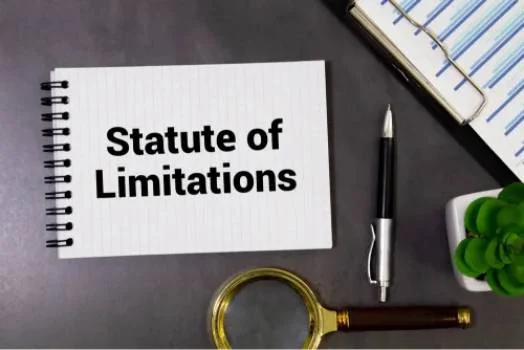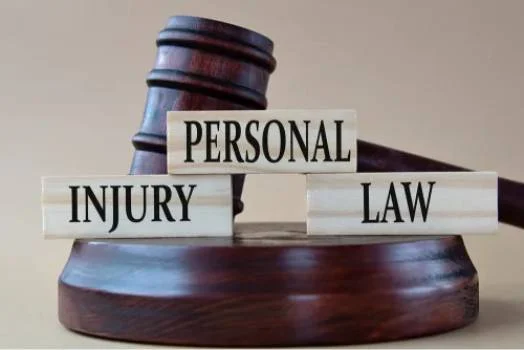How to Make a Personal Injury Claim in Texas
Have you been injured due to someone else's actions and are considering a personal injury claim? This guide will walk you through the process in Texas, from understanding common types of accidents to proving negligence and knowing your rights. Let's start with how to make a personal injury claim in Texas and claim the compensation you deserve.
- Personal injury claims in Texas require proof of negligence or intent, with foundational elements including duty of care, breach, causation, and damages.
- Common sources of personal injury claims include car accidents, slips and falls, and workplace accidents. To identify potential claims, a comprehensive understanding of negligence is necessary.
- Key legal factors, such as statutes of limitations and comparative negligence rules, can significantly influence the pursuit and potential outcomes of personal injury claims.

Understanding Personal Injury Claims in Texas

Personal injury involves harm caused by another party's negligence or intentional actions. A personal injury lawsuit is the legal action an individual can pursue when harmed due to another party's negligence or intentional actions. Claims include physical injuries and emotional well-being related to those injuries. Consequently, personal injury claims can stem from numerous scenarios where an injured person has been wronged or harmed, including cases of bodily injury.
Personal injury law aims to hold individuals or entities accountable for causing harm to others. It includes injuries resulting from intentional, negligent, or reckless actions. For example, a careless driver who causes a car accident can be held liable for the resulting injuries and damages. If that same driver was drunk at the time of the crash, punishment damages may be added to the remedies.
Pursuing a personal injury claim requires a significant injury and proof of negligence or intent by the responsible party. A thorough evaluation of the circumstances and actions of those involved is necessary. These foundational elements are crucial to a deeper understanding of personal injury claims.
Common Types of Personal Injury Accidents in Texas
Personal injury claims frequently stem from common accidents. Car and motor vehicle accidents, often due to driver negligence, are among the most common. Injuries from these incidents can vary from minor to severe, impacting the victim's ability to work and perform daily tasks.

Slip and fall incidents, often due to unsafe conditions on private or public properties, are another common source of personal injury claims. Workplace injuries are common and may involve a workers' compensation claim, a third-party case, or a non-subscriber case against the employer.
Some injury cases, such as 18-wheeler accidents, are complex and require detailed knowledge of the specific regulations or safety standards. Recognizing these common scenarios and understanding negligence helps individuals identify potential personal injury claims.
Establishing Liability in Personal Injury Cases in Texas
Liability in personal injury cases means legal responsibility for harm caused by negligence or intentional actions. Personal injury lawsuits hold defendants responsible for accidents that result in physical and financial harm to plaintiffs. Establishing liability is crucial as it identifies who is at fault and who should compensate the injured party. Liability can arise from negligence, recklessness, or intent.
A valid personal injury claim requires evidence of carelessness or intentional harm by the defendant. The plaintiff must show that the defendant failed to exercise reasonable care, leading to the injury. Understanding these nuances is vital for anyone considering legal action.
Personal injury laws vary significantly by state, which can significantly impact case resolutions. In Texas, specific regulations and precedents shape these laws. We will explore these in detail, starting with the primary ways to establish liability, which include proving negligence and addressing intentional harm.
Proving Negligence
Negligence, a cornerstone of personal injury law, involves carelessly or recklessly violating laws or safety rules, leading to injuries. To prove negligence, four elements must be established: duty of care, breach, causation, and damages. The defendant must have owed a duty of care, breached it, directly caused the injury, and resulted in actual damages.
Victims must show that their injuries resulted from the defendant's failure to fulfill their duty of care. Proof of fault often involves gathering evidence, such as eyewitness accounts, photographs, and expert testimony. A clear and compelling case is crucial for proving negligence and securing compensation.
Intentional Harm and Legal Recourse
Intentional harm involves deliberate actions like assault, leading to personal injury claims. Unlike negligence, these cases involve actions meant to cause harm. Victims can seek damages for injuries, which may include medical treatment costs, emotional distress, and more.
Intentional harm expands the scope of personal injury claims, as legal recourse may involve compensatory and punitive damages. Punitive damages punish the defendant for egregious behavior and deter similar actions in the future. However, most intentional cases will not be covered by insurance. Making the collectability of damages a problem in many Texas cases.
Grasping these distinctions helps victims understand what to expect when pursuing legal action for intentional harm.
Call Our Award-Winning Houston Injury Lawyer for Your FREE CONSULTATION.
Essential Elements of a Texas Personal Injury Claim

To succeed in a personal injury claim, plaintiffs must prove several key elements. First, they must show that the defendant owed them a duty of care, meaning a legal obligation to act in a way that prevents harm. For instance, drivers must follow traffic laws to avoid causing accidents.
Next, the plaintiff must demonstrate that the defendant breached this duty of care by failing to meet the expected standard in a specific situation, such as running a red light or not maintaining safe premises.
Causation is another crucial element, requiring proof that the defendant's actions directly caused the injury.
The plaintiff must also demonstrate actual damages, such as medical expenses, lost wages, and other financial losses. Actual damages must be harm that happened and not what might have happened. Establishing these elements is vital to building a strong personal injury case.
Texas Laws Related to Filing Personal Injury Claims
Several laws in Texas deal with personal injury claims. We will cover these laws one at a time. Statutes of limitations set out the time limits that you have to bring a lawsuit. Comparative negligence laws set forth how fault is apportioned and the consequences of being partly at fault. Punitive damages in Texas are limited in scope and deal with punishment damages as opposed to compensatory damages.
Texas Statute of Limitations
This is the time limit for filing a lawsuit over a personal injury claim in Texas. Texas has a general time limit of two years from the accident date in which you have to file your lawsuit. Missing that deadline can result in a waiver of your claims.
Comparative Fault in Texas
The Texas statutory scheme is one of comparative negligence. Comparative negligence means that all parties are examined to see if they did something that contributed to causing the accident. Each party is assigned a percentage of fault. If the polenta was partly at fault, their damages will be reduced by that percentage. However, if the plaintiff's responsibility is above 50%, the plaintiff will not be able to collect damages in Texas.
Potential Damages in Personal Injury Cases in Texas
Potential damages in personal injury cases can be extensive. Compensatory damages include quantifiable monetary losses and non-monetary losses. Economic damages may cover past and future medical care, rehabilitation, and adjustments to living conditions resulting from a disability.
Victims can also seek compensation for lost wages during recovery and diminished earning capacity due to injuries. Punitive damages, intended to punish the defendant for egregious behavior, differ from non-monetary damages, which include compensation for pain and suffering and emotional distress. In Texas, punitive damages are known as exemplary damages and have damage award caps.
Keeping detailed records of medical bills and lost wages is crucial for maximizing compensation and facilitating individual recovery. Structured settlements offer financial stability by allowing victims to cover medical expenses through large damage awards in regular payments rather than a lump sum.
Steps to Take After Suffering a Personal Injury in Texas
If you have suffered a personal injury, immediate action can make a significant difference. The steps to take: First, seek medical attention to treat and document your injuries. Document the accident scene with photos, videos, and witness statements to gather evidence.
Reporting the incident to authorities creates an official record to support your injury claim. Consulting a personal injury attorney helps you understand your legal rights and document the crash. Hiring a lawyer can facilitate quicker compensation, allowing you to focus on recovery.
Seeking Medical Attention and Treatment
Seeking medical attention promptly is crucial in the personal injury claim process. It is essential to receive medical attention immediately after an accident or injury to ensure your injuries are properly documented and treated. Getting needed medical care will also help to establish a clear link between the accident and your injuries, which is vital for building a strong personal injury case.
When seeking medical attention, it is essential to:
- Provide a detailed account of the accident and your injuries to your healthcare provider.
- Follow your healthcare provider's treatment plan and attend all scheduled appointments.
- Keep a record of all medical expenses, including bills and receipts.
- Inform your healthcare provider of any pre-existing medical conditions relevant to your case.
By seeking medical attention and treatment, you can ensure that your injuries are properly documented and treated, which will help to support your personal injury claim. Proper documentation of medical expenses and adherence to treatment plans are critical in demonstrating the extent of your injuries and the impact on your life, thereby strengthening your case.
Filing a Claim and Getting Required Evidence
Filing a claim and gathering evidence are critical in the personal injury claim process. After seeking medical attention and treatment, you must file a claim with the party's insurance company responsible for your injuries. Making a claim will initiate the claims process and allow you to seek compensation for your injuries.
When filing a claim, it is essential to:
- Provide detailed information about the accident and your injuries.
- Submit all relevant documentation, including medical records and bills.
- Keep a record of all correspondence with the insurance company.
- Cooperate with the insurance company's investigation.
Gathering evidence is also a critical step in the personal injury claim process. Proof may include:
- Photographs of the accident scene and your injuries.
- Witness statements.
- Police reports.
- Medical records and bills.
- Documentation of lost wages and other expenses related to your injuries.
By filing a claim and gathering evidence, you can build a strong personal injury case and increase your chances of recovering compensation for your injuries. Detailed records and thorough documentation are essential in demonstrating the validity of your claim and the extent of your damages, helping you to seek the compensation you deserve. Different types of personal injury cases may require unique kinds of evidence.
Working with a Texas Personal Injury Lawyer
Working with a personal injury lawyer offers numerous benefits. Experienced lawyers, such as those at Baumgartner Law Firm, provide complimentary consultations and free case reviews. Clients pay no fees until their case successfully concludes.
Lawyers excel at negotiating with insurance companies, often securing higher compensation for clients. They provide expert guidance throughout the claim process and court representation, ensuring injured parties receive the compensation they deserve.
Contact Baumgartner Law Firm for a Free Personal Injury Claim Consultation.
Our personal injury lawyers have protected the rights of the seriously injured for over 35 years. Contact us for a complimentary case evaluation.
Visit Our Law Firm in Houston
Frequently Asked Questions
What is a personal injury claim?
A personal injury claim is a legal measure pursued by an injured individual against the responsible party to obtain compensation for damages incurred. It serves to hold the liable party accountable for their actions.
What types of accidents commonly lead to personal injury claims?
Car accidents, slip and falls, and work injuries are the most common types of accidents that lead to personal injury claims. These incidents often result in significant injuries and legal recourse is frequently sought.
How do I prove negligence in a personal injury case?
To prove negligence in a personal injury case, you must demonstrate that the defendant had a duty of care, breached that duty, directly caused your injury, and resulted in measurable damages. Establishing these elements is crucial for a successful claim.
What are the statutes of limitations for personal injury claims?
The statute of limitations for personal injury claims in Texas is two years from the accident date. It is essential to consult a personal injury lawyer for specific timeframes.
What types of damages can I seek in a personal injury case?
In a personal injury case, you can seek compensatory damages for medical expenses and lost wages, non-monetary damages for pain and suffering, and potentially punitive damages. It is essential to assess the specific circumstances of your case to determine the types of damages applicable.
For a FREE Consultation Contact Us Today
"*" indicates required fields
Related Links
Our Experienced Houston Personal Injury Lawyer Can Help!
Case Results
$5,750,000.00 Truck Accident - Wrongful Death
$6,000,000.00 Daycare Injury
Confidential Settlement Commercial Vehicle Crash - Wrongful Death
Confidential Settlement Burn Injury
Confidential Settlement 18-Wheeler Accident - Wrongful Death
Legal Services
Contact the Auto Accident Lawyer
at Baumgartner Law Firm for Help!
Contact the Houston car crash law firm for help with a personal injury claim.
OR
Fill out an online consultation request for a FREE consultation.
Related Resources
- Texas Personal Injury Lawyer Near You
- Who Gets the Money in A Wrongful Death Lawsuit In Texas?
- Motorcycle Accident Lawsuit Settlement Factors
- How Do Personal Injury Attorneys in Texas Get Paid
- Contingency Fees in Houston Personal Injury Cases
About Our Law Firm in Houston
Houston personal injury lawyer Greg Baumgartner heads the Baumgartner Law Firm.
Our firm was established in 1985 and has helped thousands of injury victims get maximum compensation for their cases. If you have been injured in an accident in Houston, TX, contact us for a free, no-obligation consultation. (281) 587-1111.
Since 1985, Baumgartner Law Firm has limited our law practice to serious personal injury cases. Our legal team has won maximum compensation for thousands of accident victims and recovered millions of dollars for real people like you.
Helping these areas around Houston
"*" indicates required fields

